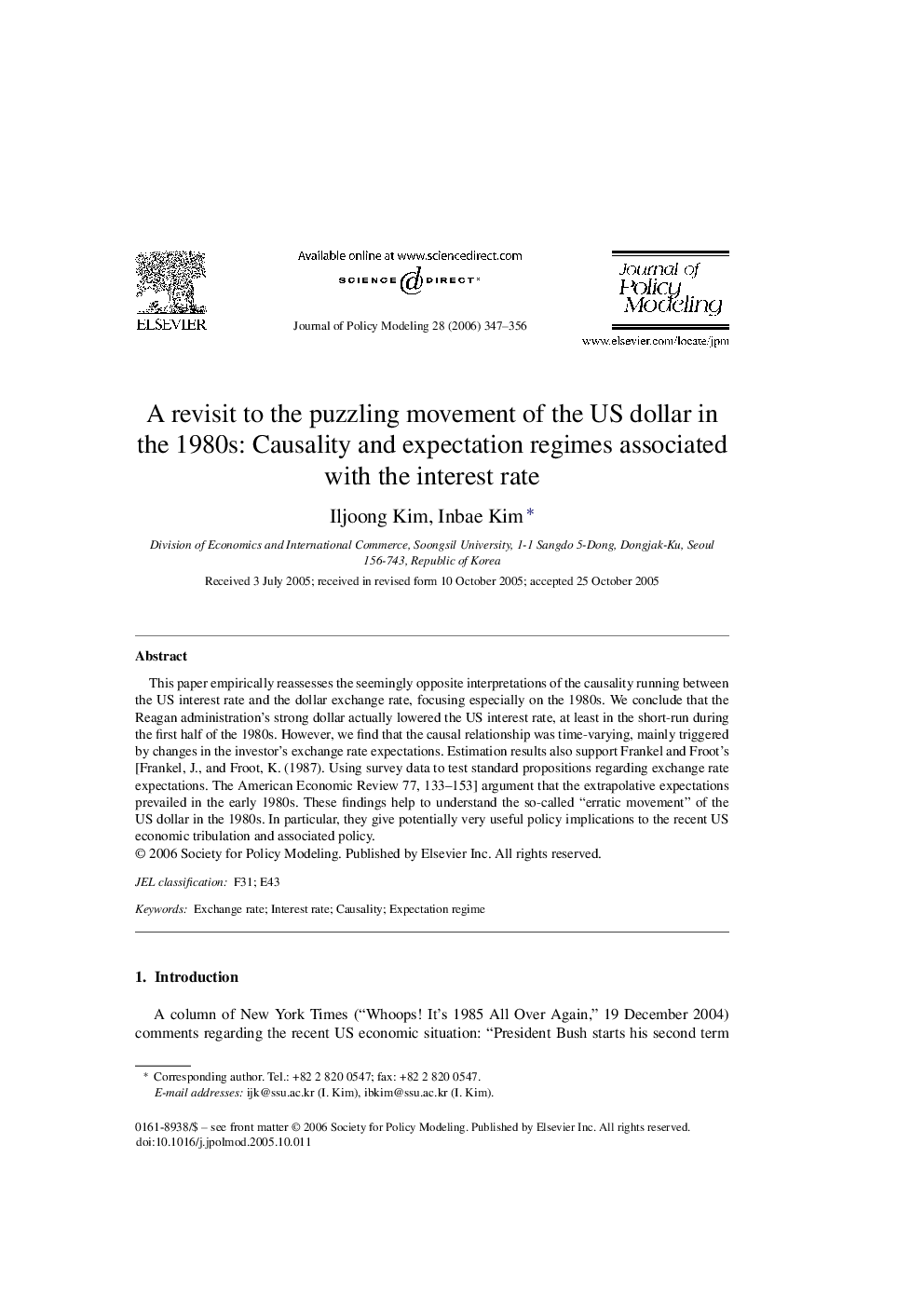| Article ID | Journal | Published Year | Pages | File Type |
|---|---|---|---|---|
| 968280 | Journal of Policy Modeling | 2006 | 10 Pages |
Abstract
This paper empirically reassesses the seemingly opposite interpretations of the causality running between the US interest rate and the dollar exchange rate, focusing especially on the 1980s. We conclude that the Reagan administration's strong dollar actually lowered the US interest rate, at least in the short-run during the first half of the 1980s. However, we find that the causal relationship was time-varying, mainly triggered by changes in the investor's exchange rate expectations. Estimation results also support Frankel and Froot's [Frankel, J., and Froot, K. (1987). Using survey data to test standard propositions regarding exchange rate expectations. The American Economic Review 77, 133-153] argument that the extrapolative expectations prevailed in the early 1980s. These findings help to understand the so-called “erratic movement” of the US dollar in the 1980s. In particular, they give potentially very useful policy implications to the recent US economic tribulation and associated policy.
Related Topics
Social Sciences and Humanities
Economics, Econometrics and Finance
Economics and Econometrics
Authors
Iljoong Kim, Inbae Kim,
